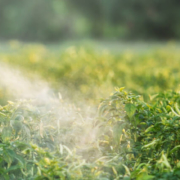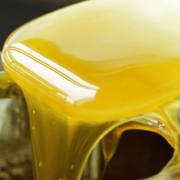The manufacture of liquid phytosanitary products has some characteristics that must be taken into account when choosing the most efficient dispersers and mills. Liquid phytosanitary products or flowable products are terms generally used to name herbicides, fungicides, insecticides or fertilisers. In the past, this type of product was supplied in powder or soluble pellets. However, […]
Plastisols are compounds made with PVC resin, a plasticiser replacing Dioctyl Phthalate which provides flexibility and durability, and other additives such as calcium carbonate, epoxidised oil, stabilisers, colourants, etcetera.
Also known as PVC pastes, plastisols maintain a liquid state with visco-elastic properties when at room temperature. However, when subjected to temperatures above 43ºC, plastisol viscosity increases and, when reaching temperatures of over 160ºC, it can change from a liquid to a solid state after cooling as a result of process known as gelation.
Paint & Coatings, an international event bringing together the main companies working in the surface treatment and paint technology sector, will be held on 16 and 17 November at Fira Barcelona.
As a company specialised in developing machinery for manufacturing paint and related products, Oliver + Batlle will be present at the event, not only on the expo -where you can visit us at Stand 108-, but also at online events and webinars that will take place during the months leading up to the event. Let’s have a look at some of them.
Thixotropy is a property of some products which change their viscosity and become more fluid when subject to constant shear force, e.g., in the mixing stage. The longer the fluid is under shear stress, the less its viscosity.
In normal conditions, a thixotropic fluid is highly viscous (equilibrium viscosity) but becomes liquid or more fluid when subject to shear force. This type of product takes certain time to reach its equilibrium viscosity when an instantaneous change in shear rate occurs. For example, when a mixer’s shear work is stopped or slowed down, the fluid tends to reach equilibrium viscosity, which is always higher than its viscosity when it is being mixed. Read more
How to optimise the wet grinding process for paint production? The wet grinding process occurs when a product is transformed from solid to liquid, regardless of its viscosity: paints, inks, enamels, nail varnish, among others. In this process, agglomerates that were not separated in the dispersion phase (due to the electro-physical bonding of some components) […]





